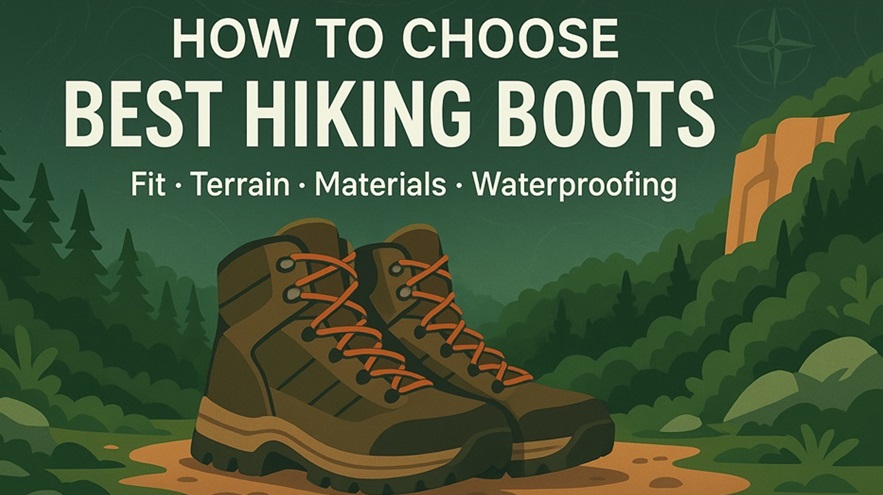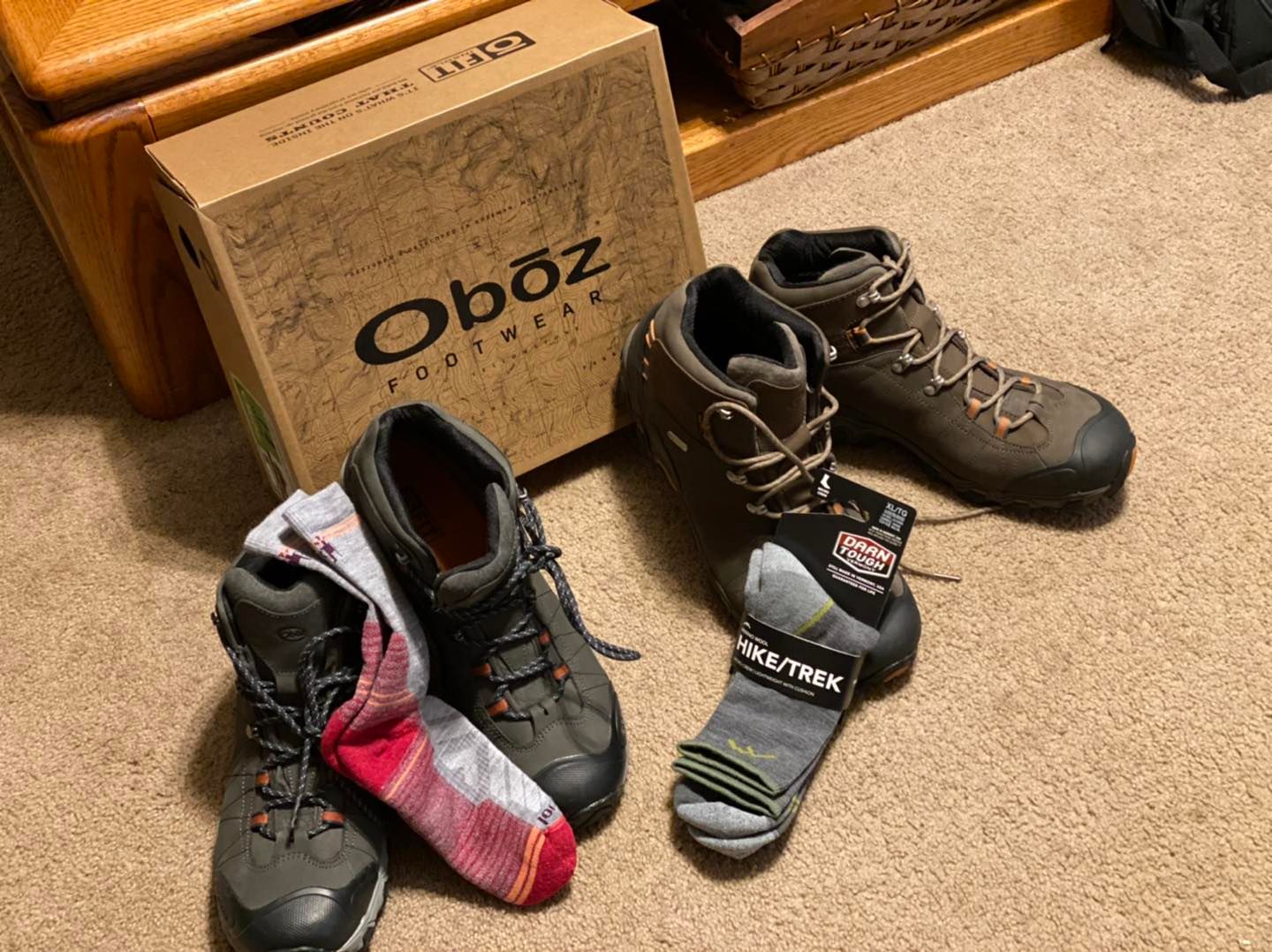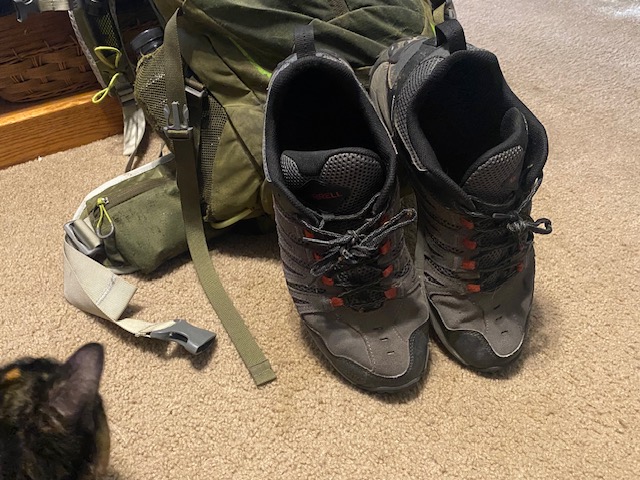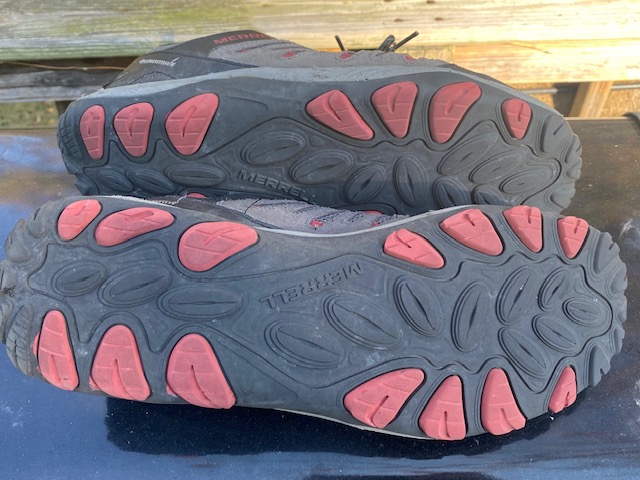How to Choose the Best Hiking Boots
It’s really important for you to choose the best hiking boots possible if you truly wish to enjoy your hiking experience.
Not choosing the right hiking boots means trouble for you. You’ll get blisters, sore knees and ankles, and unwanted pain. During wetter seasons, you definitely want to avoid getting your feet wet at all costs, too.
In this guide, I’m going to talk about getting the best hiking boots that fit the terrain you’re hiking on, your load, and your feet. Basically, we’ll look at the boots that are perfect for you in particular.
Choosing the Best Hiking Boots Starts with You!
There are four key areas to focus on when choosing the best hiking boots.
- Terrain and Surface
- Weather and Season
- Distance and Pack Weight
- Pace and Style
Terrain and Surface
In terms of the terrain and surface, what will you be hiking on?
Rock, slabs, roots, mud, slick limestone, and sand typically require a hiking boot designed for rugged conditions.
This will help you get a better grip while hiking on those types of surfaces. This will help keep you from slipping and falling. Ignoring this area could lead to injury.
Pay close attention to the grip rating of the hiking boots you’re considering ensuring they meet the typical type of terrain you hike on.
Weather and Season
Different weather and seasonal conditions will also be important to consider when choosing the best hiking boots possible.
Is the typical weather you hike in cold or warm weather? There are hiking boots made for colder conditions and others made for warmer climates.
Wearing a warm-weather boot in colder weather is likely to lead to extreme discomfort and potentially an injury such as frostbite. Wearing cold-weather boots in the summer will lead to stinky feet, boot material degrades (from sweat), and potentially foot infections from bacteria buildup.
You’ll also want to consider how waterproof or water-resistant the boot is. This is especially important for winter hiking and anywhere with creek crossings.
Choose wisely when it comes to what the boot is rated for in terms of warm and cold weather.
Distance and Pack Weight
What is your typical distance? Are you just doing day hikes, or are you doing multiple days and nights on the trail?
How much gear do you pack?
The questions above are essential for choosing the best hiking boots. Some boots are rated for long-term use and even for the weight of your pack. Not all hiking boots are made for overnight backpacking or heavier loads.
Cheaply made boots are not going to last very long on multiday hikes with fully loaded backpacks above them, for example.
Pace and Style
Different hiking boots are made for different types of hiking.
You can use regular hiking boots for most types of hiking. However, you might need a specific boot for fast hiking or trail running sessions. Some boots are made for specific hiking styles to keep you more comfortable.
Different Types of Hiking Footwear
There are many types of hiking shoes and boots to choose from.
- Trail Runners: These are typically the lightest in weight and most breathable. However, they offer little ankle support and are typically not water-resistant at all.
- Hiking Shoes: These are like trail runners, but made for hikers, with some water resistance and support features. However, they do not provide the type of protection that boots do.
- Mid-Cut Boots: These provide support and protection around the ankles and can be fully waterproof. However, anything above the ankles will be unprotected.
- Full Boots: These are typically the most durable hiking boots, offering full protection. They can be harder to break in and hotter during warm days.
- Winter/Insulated Boots: These boots are often used in very cold climates, where it’s important to protect skin from cold air. They would never be practical in warmer environments.
Trail runners will be very light, while winter boots will be very heavy. The bigger the shoes or boots, the more weight they typically carry. There are more premium brands that use lighter materials, but you can expect to pay more for those types of shoes and boots.
Anatomy of a Hiking Boot
There is a lot that goes into a hiking boot if you can believe it.
The uppers and materials used to make the boot are typically leather, suede, synthetics, and mesh, and it features toe caps.
Membranes such as Gore-Tex are often incorporated into boots to make them water-resistant.
Different material blends are used to create the midsole, or cushion, that your foot rests on. There may also be integrated rock plates to help make the boot more durable while protecting your foot.
Outsoles and traction materials protect the boot from harsh conditions and provide grip on slippery surfaces as you hike.
Boots are often design for maximum comfort after use and wear. This includes the toe box dimensions and other elements.
Lacing hardware and tongues are also taken into consideration. Different lace-lock options may be included, and tongue comforts added.
When choosing the best hiking boots possible, you definitely want to understand all the materials and features that go into making the boots best for you and your needs.
Fit and Sizing
Most of the time, people get blisters and foot pain from hiking boots that don’t fit properly.
Before choosing the best hiking boots for you, you’ll want to get an accurate measurement of your foot. This will ensure you can choose the correct size. Sizing is so important.
Another tip is to wear a normal hiking sock on one foot and a winter hiking sock on the other when visiting the hiking boots store. That way, when you try on the boots, you can get a feel for how they will fit when wearing different hiking socks.
When trying on boots, make sure there is plenty of toe room. Make sure the heel is locked when walking up stairs. The boots should fit snug without making your foot or toes go numb. The boot should bend where your toes bend.
Consider how the insoles and orthotics are based on your needs. Get an idea of when you need to change them.
You might need to consider special fit needs such as wider boots for wider feet, high instep, bunions, and plantar fasciitis.
Features Worth Paying for and Not Worth Paying For
There are many features worth paying for, and some not worth paying more for, when choosing the best hiking boots.
For example, you’d want to pay more for a gusseted tongue, quality rubber, a better rand, removable insoles, and lace lock features because they’ll significantly improve your hiking experience.
You might want to pay extra for features like waterproofing, toe caps, plates, and gaiter rings, but that will really depend on your needs.
However, don’t be fooled by hype features like buzzwords used that don’t identify the actual specs of what is supposedly being improved.
Weight vs. Support vs. Durability
The weight of the boot will impact your hiking experience. As you add ounces of weight, often due to needed features, fatigue will increase.
However, a stiffer, taller boot, while heavier, will often provide better support, helping protect you from ankle twists and sprains. Stiffer boots will also reduce foot and knee pain when you have heavier loads in your backpack.
Consider the material being used when judging durability. Cheaper boots will not last as long.
Budget and Buying Smart
When choosing the best hiking boots for your budget, you do need to consider how much you’re willing to spend, as it tends to affect durability and features.
If you plan to spend under $120, you’ll be buying a basic entry-level hiking boot. The materials and features will be of lower quality. Depending on how much you hike, this budget for boots won’t last that long.
$120 to $200 is typically the sweet spot for buying the best hiking boots with the features, comfort, and durability you need.
If you have a budget of more than $200, those boots are best for heavy use, thru-hiking, and special needs.
The best place to buy hiking boots is from a hiking or outdoor store. I will always recommend shopping locally before using a chain store. However, if you have a local REI store, it might be the better choice for getting hiking boots.
When buying winter-related boots, try to buy them during the off-season. You might find some that are being discontinued due to a feature upgrade or are discounted because of the season. Look for deals and spend less.
FAQs for Buying the Best Hiking Boots
- Should I size up in hiking boots?
This really depends on the fit of the boot. I typically size up so I can wear a thicker hiking sock in winter and still be comfortable. As long as I can wear the boot tight without movement, I’ll size up.
- How tight should hiking boots be?
They should be tight enough not to move around too much on your foot. That will cause chaffing, blisters, and discomfort. However, they shouldn’t be so tight that they make your feet or toes go numb.
- Should I get waterproof or water-resistant hiking boots?
This depends on your needs. Waterproof will typically keep your foot entirely dry, which can be critical in colder climates. However, it will be less breathable and heavier. Water-resistant materials will protect your foot from most water but will not be entirely waterproof. The boot will breathe better and be lighter.
- Can I hike in trail runners instead of boots?
Of course you can. Many hikers choose trail runners over hiking boots because they are lightweight and breathable. They’re often a great choice for fast-packers and warmer climates. However, they typically offer no water resistance, no ankle support, and can be difficult to wear when you have heavy loads on your back.
- How long should hiking boots last?
This depends on how often you hike and the conditions you typically hike in. The more you hike, the more you wear out the boot. The rougher the terrain, the more the boot durability decreases. In most cases, a hiking boot in the $120 to $200 range (which is a typical hiker’s budget) should last 2 or more years but may need maintenance here and there.
Final Thoughts About Getting the Best Hiking Boots
You’ll notice I didn’t give brand names here or review specific boots. That’s because I am not reviewing a boot for this article; I’m showing you what you need to look for. Too many boot review articles exist without information about why you should or should not go with a particular hiking boot.
Make sure you do your research first; otherwise, you might buy something you will dislike enough to stop hiking.
A hiking boot to a hiker is like a gun to a hunter or a bike to a cyclist. It’s your main gear, and you want it to be the best gear.
If you found this article to be helpful, please consider supporting my efforts by becoming a Patreon Supporter. You’ll get exclusive access to my online community for a few dollars a month, and you can easily cancel anytime if needed. Your support means a lot to me.
Be sure to subscribe to my free monthly newsletter for more hiking tips, gear reviews, and upcoming local events in and around the Shawnee National Forest.
And until next time, I’ll see you on the trail!

Shawn Gossman
Founder, Hiking with Shawn
Howdy folks! My name is Shawn Gossman and I founded Hiking with Shawn. I’m an avid hiker, cyclist and outdoorsman here in the Shawnee National Forest. I was born and raised in Southern Illinois and never want to leave. Click here to learn more about Shawn Gossman





